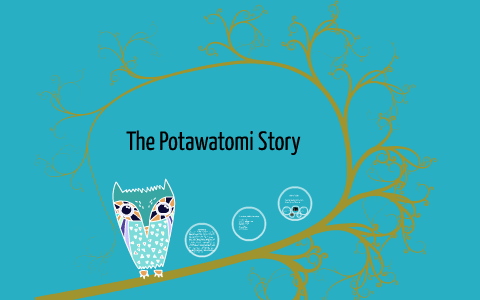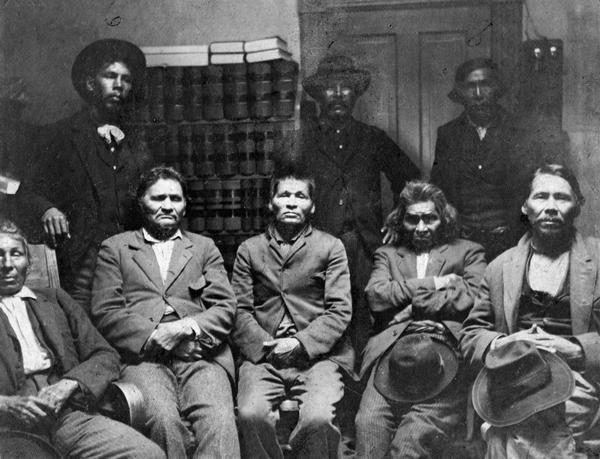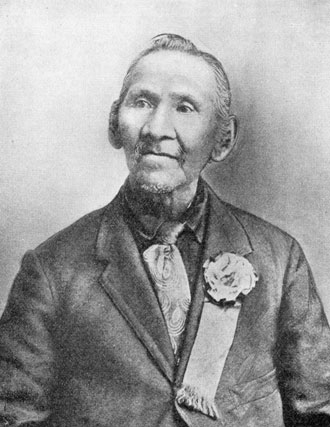Stolen Stories: The Potawatomi Struggle for Survival Through Assimilation
Stolen Stories: The Potawatomi Struggle for Survival Through Assimilation

The wind whispers through the tallgrass, carrying the echoes of a story that’s been told and retold for generations. It’s a story of resilience, of loss, and of the relentless struggle to hold onto a cultural identity in the face of relentless pressure. This is the story of the Potawatomi people and their journey through assimilation, a process that sought to erase their traditions, their language, and their very sense of self.
The Potawatomi, a proud and vibrant Native American tribe with a rich history, were once the guardians of the Great Lakes region. They were farmers, hunters, and skilled artisans, living in harmony with the land. Their culture was woven into the fabric of their existence, passed down through generations in ceremonies, stories, and songs.
Related Articles: Stolen Stories: The Potawatomi Struggle for Survival Through Assimilation
- Roll The Dice: Finding Your Nearest Indian Casino
- Unveiling the Treasures of Montana's Seven Indian Reservations
- Montana’s Got Game: Where To Find Indian Casinos In The Big Sky Country
- Oklahoma’s Hidden Gems: Hiking On Native Land
- Unearth the Secrets of Blackfoot Legacy in Virginia
But the arrival of European settlers in the 17th century ushered in a new era. The settlers brought with them a thirst for land and a belief in their own superiority. The Potawatomi, like many other Native American tribes, were forced to confront a brutal reality: their way of life was under attack.
The first wave of pressure came through land dispossession. Treaties were signed, often under duress, that stripped the Potawatomi of their ancestral lands. The promise of peace and prosperity turned into a nightmare of displacement and forced migration. The Potawatomi were pushed further and further west, their traditional territories shrinking with each passing year.
As the 19th century dawned, the tide of assimilation began to rise. The United States government, fueled by a misguided belief in "civilizing" Native Americans, implemented policies aimed at erasing their traditional ways of life. These policies took many forms, each more insidious than the last.
The Education System: A Weapon of Cultural Erasure
The government established boarding schools, designed to sever the connection between children and their families, their culture, and their language. These schools were often brutal, with children subjected to physical and emotional abuse. They were forced to abandon their native languages, their traditional clothing, and their religious practices. The goal was clear: to replace their indigenous identity with an American one.
Imagine a young Potawatomi child, ripped away from their loving family, forced to speak English, dress in Western clothes, and attend religious services that held no meaning to them. This was the reality for countless Potawatomi children, their spirit slowly chipped away, their cultural heritage stolen.
The Reservation System: A Cage of Containment
The government also established reservation systems, confining the Potawatomi to small, often impoverished, tracts of land. The goal was to keep them isolated, dependent on government handouts, and unable to practice their traditional ways of life.

The reservation system was a cruel irony. It was meant to protect the Potawatomi, but it actually trapped them in a cycle of poverty and dependence. It stripped them of their autonomy, their self-reliance, and their sense of belonging.
The "Civilizing" Myth: A False Promise
The government’s assimilation policies were based on the flawed belief that Native Americans were inferior and needed to be "civilized." This belief was a dangerous misconception, one that ignored the rich history, culture, and contributions of the Potawatomi people.
The Potawatomi were not savages in need of civilizing. They were a people with a deep connection to the land, a complex social structure, and a vibrant cultural heritage. Their traditions, their language, and their spiritual beliefs were a testament to their strength and resilience.
The Struggle for Survival: A Legacy of Resistance

Despite the relentless pressure of assimilation, the Potawatomi spirit remained unbroken. They clung to their traditions, their language, and their sense of identity. They resisted assimilation in subtle and overt ways, finding ways to preserve their culture even in the face of adversity.
They practiced their traditions in secret, passed down their stories and songs to their children, and fought to retain their land and their way of life. They knew that assimilation was not just about changing their outward appearance, it was about erasing their very soul.
The Long Road to Reclaiming Their Heritage
The fight for cultural survival continues to this day. The Potawatomi people are working to reclaim their heritage, to revitalize their language, and to share their stories with the world. They are fighting for recognition, for respect, and for the right to self-determination.
They are building schools, museums, and cultural centers, creating spaces where their traditions can flourish. They are working to heal the wounds of the past, to reclaim their stolen stories, and to ensure that their culture will survive for generations to come.

The Potawatomi Journey: A Lesson in Resilience
The Potawatomi story is a powerful reminder of the human spirit’s resilience. They have faced immense hardship, yet they have never lost sight of their identity. Their story is a testament to the enduring power of culture, the importance of self-determination, and the unwavering strength of the human spirit.
The Potawatomi people are a living example of the fact that assimilation, while it may seek to erase, can never truly destroy. Their story is a beacon of hope, a testament to the power of culture, and a call for us all to recognize and honor the diverse tapestry of human experience.
FAQ about Potawatomi Assimilation
Q: What were the main goals of assimilation policies aimed at the Potawatomi?
A: The main goals were to erase their traditional way of life, including their language, religion, and cultural practices, and to assimilate them into mainstream American society. This involved forcibly removing children from their families and placing them in boarding schools, confining them to reservations, and discouraging traditional practices.
Q: How did the Potawatomi resist assimilation?
A: The Potawatomi resisted assimilation in various ways, including:
- Secretly practicing their traditions: They continued to practice their ceremonies and teach their language to their children in secret.
- Fighting for land rights: They fought against land dispossession and challenged treaties that were signed under duress.
- Preserving their culture: They worked to preserve their language, stories, and songs, ensuring that their heritage would be passed down to future generations.
Q: What are the long-term impacts of assimilation on the Potawatomi people?
A: The long-term impacts of assimilation are complex and multifaceted.
- Loss of language and cultural practices: The forced assimilation led to a significant loss of language and cultural practices.
- Trauma and intergenerational effects: The experience of boarding schools and the forced separation of families has left deep emotional scars that continue to impact generations of Potawatomi people.
- Economic disparities: The reservation system and the loss of traditional lands have contributed to economic disparities between the Potawatomi people and other communities.
Q: How are the Potawatomi working to reclaim their heritage today?
A: The Potawatomi people are working to reclaim their heritage through various initiatives, including:
- Language revitalization programs: They are working to revitalize their language by creating language immersion programs and developing resources for language learners.
- Cultural preservation programs: They are working to preserve their traditional arts, crafts, and ceremonies through cultural centers, museums, and community events.
- Education and awareness: They are working to educate the public about their history, culture, and struggles through educational programs, documentaries, and public outreach.
The Potawatomi story is a powerful reminder of the resilience of the human spirit and the importance of preserving cultural heritage. It is a story that should be told and retold, ensuring that the voices of the Potawatomi people are heard and their legacy lives on.

Closure
Thus, we hope this article has provided valuable insights into Stolen Stories: The Potawatomi Struggle for Survival Through Assimilation. We appreciate your attention to our article. See you in our next article!